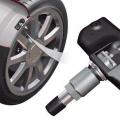The infrastructure of any settlement presupposes the presence of powerful lighting devices. Thanks to the time relay, they are able to turn off and work at the right time.
Automated work of lamps is also used on the personal plot. This consumes significantly less power, and a motion sensor is added to the relay.
Control cabinet
The control cabinet is the center in which all the circuits are collected, from where the load distribution and full control over the lighting are carried out. Protection of the light relay of luminaires from short circuit and voltage surges is also carried out through this control panel.

The scheme of the street lighting control cabinet: 1 - electric meter, 2 - lock, 3 - protection, 4 - cabinet. All information and indicators are transmitted via the Internet
Also, based on the service life, the equipment is being updated here - the longer a cable or circuit is functioning, the greater the chance that the control cabinet will have to be de-energized and worn out elements replaced for the safety of the site.
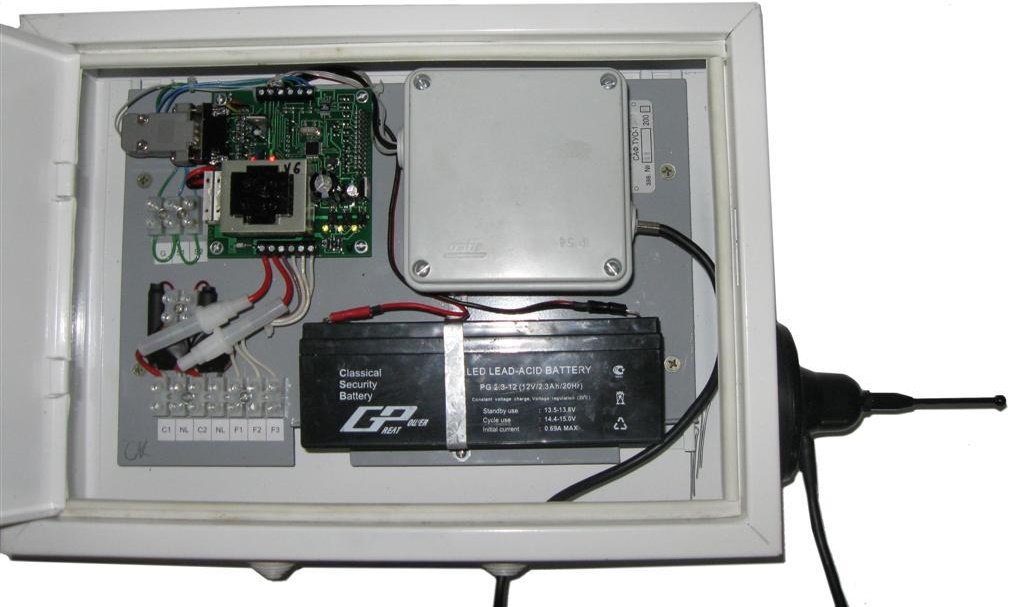
Street lighting control cabinet assembly option
The cabinet performs the main task: it controls the operation of the required relay depending on the time of day, provides guidance using the remote control, and adjusts the brightness of the lamps after the photo relay is triggered.
What to connect?
These can be ordinary street lamps with a simple relay controlled from a remote control through a control box, tiny LED lamps along the paths, pendant illumination and a lamp above the front door. That is, any lighting device located outside the house, but falling under the coverage radius of the console.
Control types
The following systems are considered traditional:
- magnetic, or induction ballast - ignites the lamp with a surge of current, but power surges often occur, which is why an additional relay has to be installed;
- electronic ballast - does not use a starter, no noise, no flickering, reduced energy consumption. Distorts the radio transmission, quickly disables the photo relay, the result is that it does not work depending on the time of day;
- option for enterprises - based on the calendar and daily time, controls lighting, starting from the "work / holiday / weekend" scheme.
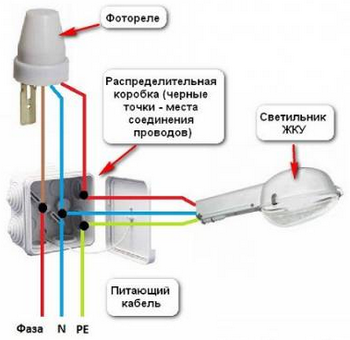
The simplest and cheapest scheme for controlling street lighting using a photo relay, at the moment the cost of a photo relay is 300-400 rubles, you can connect all street lighting on the site to it
Street lighting control uses three types of fixtures:
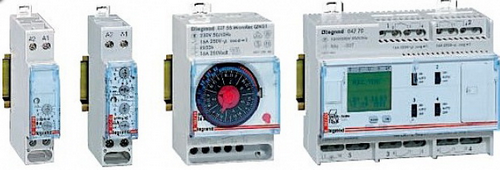
Control over the area lighting
If finances allow you to stretch a separate cable to each lamp with a relay on the site, then one control cabinet is placed inside the house, and another one at the gate. But such a shield must function in parallel with the second, which means that each unit will consume the energy of a full-fledged cable channel.

Garden lights to illuminate the site, are not afraid of water (IP66), have built-in motion sensors and a control panel
The following system will be optimal: the first cabinet is installed at the gate, and lanterns with motion sensors and a photo relay, standing along the path, are connected to its controller. The second cabinet is placed directly inside the room - remote control will be carried out from here. The scheme is simple: certain lamps are connected to the channel that goes to the control unit, and a signal is sent from the remote control.
The block under the control of which the automatic lighting system has a large number of additional features is popular. Among them are a circuit for providing illumination, remote control of a photo relay. The shield can also issue a command to automatically de-energize the perimeter of the house. And the most common and low-cost cabinet assumes the presence of 6 working channels, of which no more than 4 are usually operated.
Remote control
When all the cables are connected to the future automatic lighting system and pulled into the control cabinet, the process of its improvement begins. A controller is placed on each lamp, thanks to which it is possible to receive a command over the radio channel. Signals are transmitted using the remote control. Outwardly, such a controller looks like a miniature switchboard, the power supply of which is represented by batteries.
Another option for transmitting a command over a radio channel is possible using a sensor capable of recognizing radio waves. The device is also controlled by a remote control.
Solar-powered flashlights are very good in terms of budget and practical application. For their installation, you do not need meters of cable and a control panel. With the help of radio waves of different frequencies, individual illuminated zones can be distinguished. The main advantage of using radio channels is full coverage of the area (especially with the use of an amplifier).
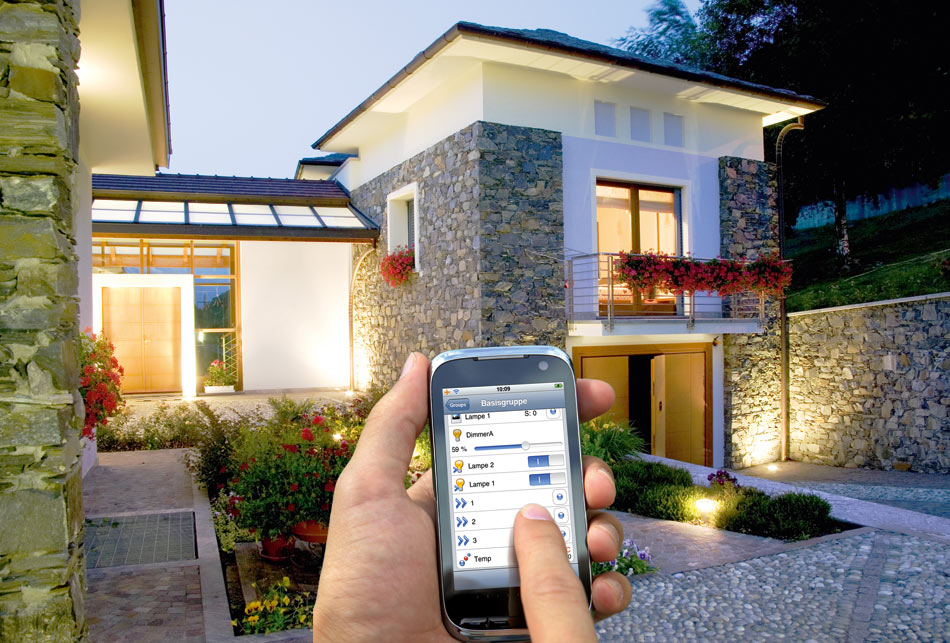
Lighting control using a smartphone
Remote control of site lighting almost always uses a control cabinet. The controller can transmit a signal in the following ways:
- the shield sends HF signals through the cable - these signals are used to automatically control individual lighting fixtures. The controller may not cope with its task due to damage on the line. The full effect can be achieved only with a separate connection of each relay;
- gsm signals. The control is tied to the smartphone program, the command is sent to the control panel. The main drawback that the system cannot avoid is the congestion of the gsm network, or the owner being outside the coverage area. But at the same time, the use of this method does not waste the budget, since the gsm network is public;
- radio channels are good for monitoring a large area. The device may not respond to the signal due to possible interference, so it is better to purchase an amplifier;
- an automated system based on digital control - a large investment of time and effort is required. The recoil is low due to regular failures. A separate control unit is desirable for each luminaire; the device requires adjustment every few days.
Regardless of the chosen method, be it a gsm network or a cable, automatic control is based on the rules of the following scheme:
- control panel over a separate relay or a group of lamps;
- control cabinet in a larger area (block, street, apartment yard);
- the main shield in charge of the area.



